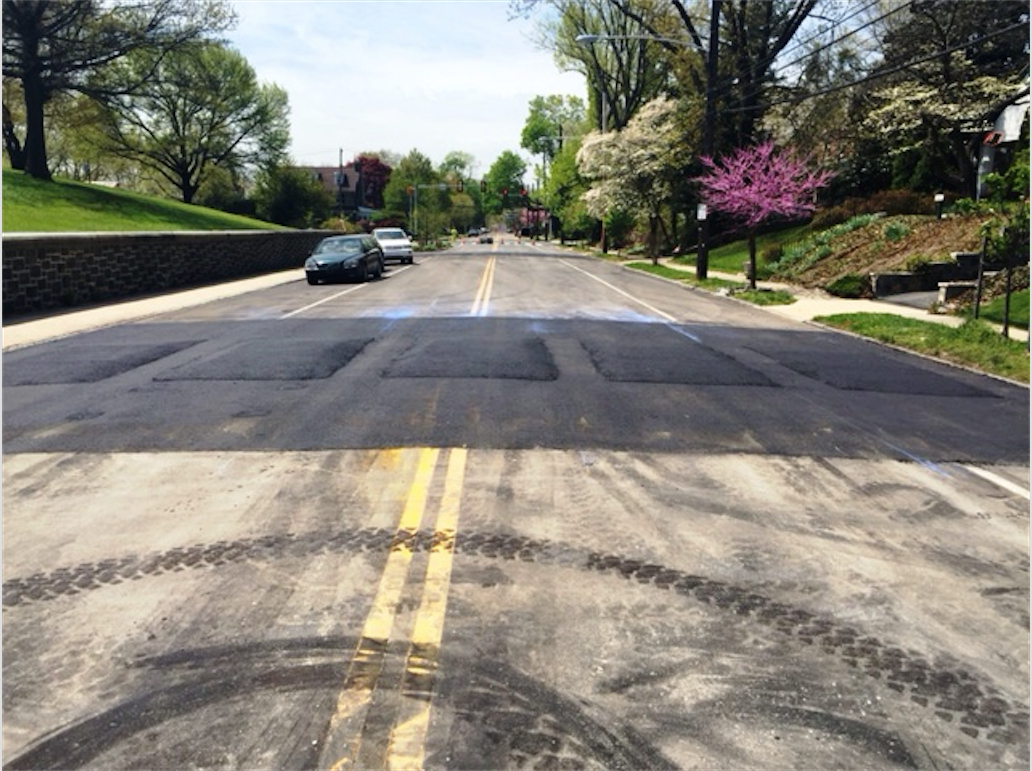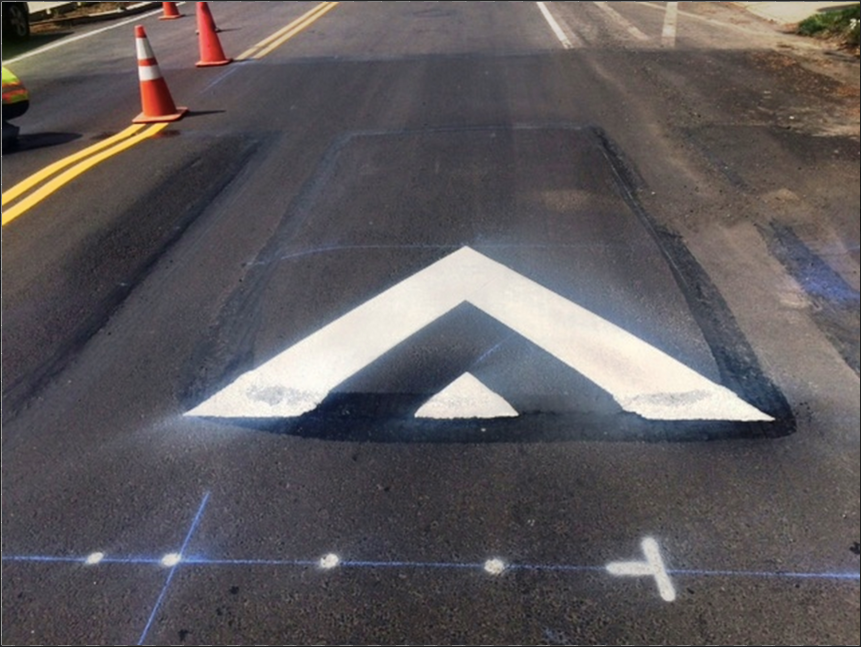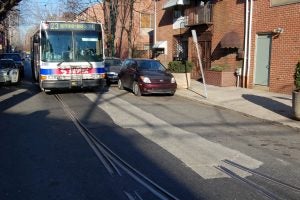Streetsplainer: Why does that speed hump have gaps?

Welcome to Streetsplainers, an occasional series of answers to those often overlooked questions about our beleaguered/beloved transportation systems: Just what the heck is that thing in the road? Why on Earth would SEPTA do that? How does that weird doohickey work? E-mail Jim your questions, and he’ll chase down the answers, hopefully in a reliably on-time fashion.
If you live in Northeast or Northwest Philly, you might have noticed some new speed humps with little gaps in them. They’re called speed cushions.
“Why would they put a few holes in a speed hump?” you might have asked, giggling, because you have the sense of humor of a middle school student.
Traffic engineers are more mature than you, which is why Mike Carroll, Deputy Commissioner for Transportation at Philadelphia’s Streets Department, corrected me stoically when I called the minor bulges in the road “bumps” instead of “humps”.
“To be clear, a speed bump is something you’ll find in a shopping center or private property,” said Carroll. “That’s a short, narrow, high bump that is meant to bring you to a full stop.”
Speed humps are the much smaller swellings of asphalt that you’ll see occasionally on residential roads – the George Costanza straight out of cold water of traffic calming to the bump’s Micahel Fassbender, if you will. The humps gently remind drivers to slow down to 25 miles per hour, a speed at which all but the lowest of low-riders can drive over them without discomfort or damage. Any faster, though, and you’ll be in for quite the bumpy ride.
If you’re rapidly approaching a hump, and fail to give the brakes a pump, your vehicle will jump, and you’ll end up with a lump on your plump rump.
So no matter how fast you are, a hump will simply take up a lot of time.
And that brings me back to the speed cushions and the reason for their gaps.
For most people, that’s what the engineers want: slow down, or else. But that doesn’t work for emergency responders. No one wants a fire truck to waste anytime getting to a blaze. For many years, emergency responders opposed the installation of traffic calming measures for just this reason, ironically making some residential streets more dangerous.
The cushion’s gaps are carefully placed at a width equal to the wheels of fire trucks and buses, so neither has to slow down quite as much going over the cushions. Carroll said emergency responders tend to lose only a single second when they travel over speed cushions, reducing delays significantly.
Speed cushions have become the norm across the U.S. over the last five years or so, said Carroll.
Not every emergency response vehicle will be able to hit the cushions at full speed. Ambulances have a slightly narrower base, so they’ll get a bit of a jolt. But EMTs will still be able to drive over the cushions at much higher speeds than they would have been able to with the speed humps.
Each cushion costs around $3,000 to $3,500, depending on the size of the road. While they are slightly cheaper than humps, Carroll emphasized that safety and improved emergency response times were the real drivers for the adoption of cushions. The funds for the cushions come from the Automated Red Light Enforcement program.
Below are where Streets has recently, or will soon, install cushions. The Department expects to build more in the coming years, but don’t expect them everywhere: the cushions are really only useful on stretches of road long and straight enough for most cars to get significantly over 25 miles per hour. For most of Philadelphia’s grid of narrow streets, that’s not really a concern. All cushions will have painted markings on to improve their visibility and warn approaching drivers.
Locations:
· Queen Lane from Henry Avenue to Fox Street
· School House Lane from Henry Avenue to Gypsy Lane
· Greenway Avenue from Cobbs Creek Parkway to 71st Street
· Winchester Avenue from Narvon Street to Welsh Road
· Susquehanna Road from Ridgeway Street to Ferndale Street
· Edison Avenue/Station Road from Maple Avenue to Trevose Road
· Medford Road from Tyrone Road to Belgreen Road
· Winston Road from E. Willow Grove Avenue to E. Moreland Avenue
· Ardleigh Avenue from Willow Grove Avenue to Mermaid lane
· Mermaid Lane from Winston Road to Stenton Avenue
· Gravers Lane from Germantown Avenue to Stenton Avenue
· Evergreen Avenue from Germantown Avenue to Stenton Avenue
· Norwood Avenue from Sunset Avenue to Chestnut Hill Avenue
· Southampton Road west of Roosevelt Boulevard
WHYY is your source for fact-based, in-depth journalism and information. As a nonprofit organization, we rely on financial support from readers like you. Please give today.






